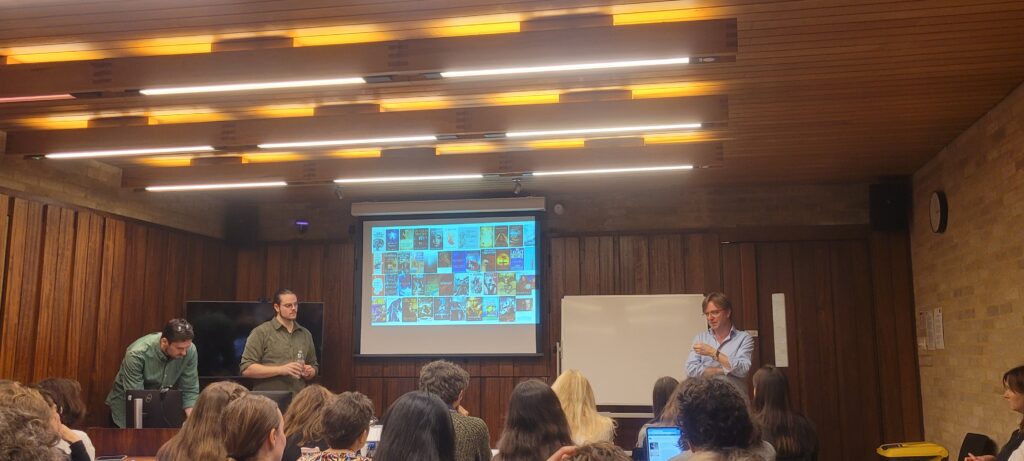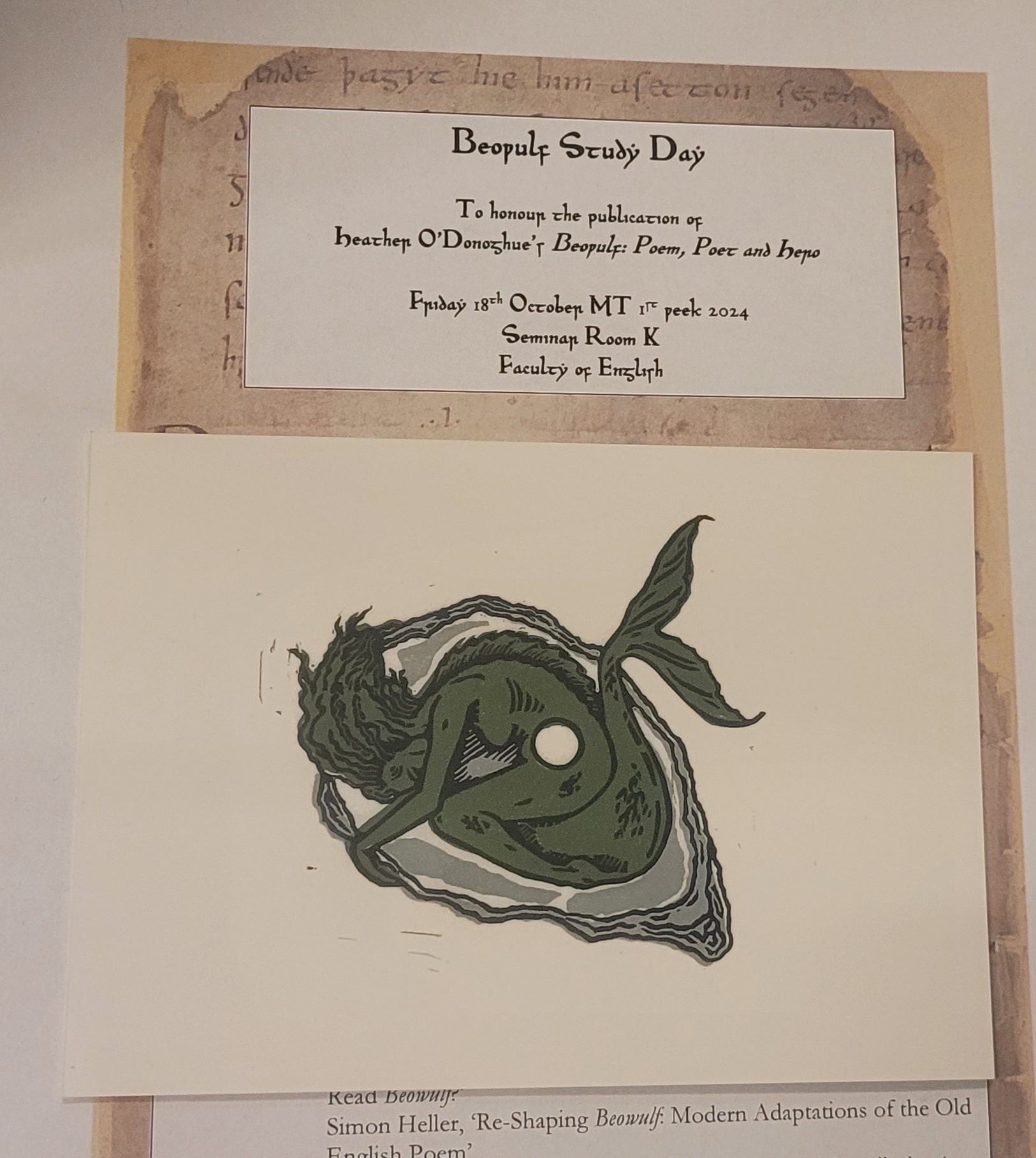On the 18th October, a Beowulf Study Day was organised by Francis Leneghan in honour of the publication of Heather O’Donoghue’s book entitled Beowulf: Poem, Poet and Hero, which was released earlier this year. Heather’s book is an ode to the mastery of Beowulf, ‘imperfect and fraying around the edges as it is’. A roundtrip tour of the poem’s narrative, its poetic makeup, and its modern reception, Heather guides us through this extensive, close reading of Beowulf and its ‘Storyworld’. New readers are warmly welcomed to the landscape of the poem, and readers familiar with the poem meet afresh its setting and society and the inhabitants that populate its landscape, human and otherwise. We are reminded of the poem’s innate and ornate artistry, and the immensity of the poetic skill worked into every half-line. The book offers not just a grand overview of the very stuff of the poem, but speaks to Heather’s nuanced appreciation of the fine threads that string it together, weaving together the voices of poet, narrator and scop, as well as the voices (and voicelessness) of its characters.
Scholars on the Study Day presented on a range of topics on the epic Old English poem, extolling and echoing Heather’s research, which has reinvigorated Beowulf criticism and reminded us all exactly why Beowulf’s afterlife continues to be so long-lived.

Just as Heather notes that Beowulf begins ‘with a bang’, the day began, appropriately, with an enthusiastic ‘Hwæt!’ from the room as Laura Varnam asked the audience to participate in her creative responses to Beowulf, which take the form of feminist poetry and give a voice to Grendel’s mother. Alison Killilea followed and read excerpts from her own translation of the poem, a Corkonian take which reimagined Heorot along the crenelations of Carrigrohane Castle.
Helen Appleton and Rachel Burns shared their exciting research later in the morning. Helen suggested that with the dragon fight, the Beowulfpresents us with a hagiographical setting wherein the Geats need a saint but have only a hero. Rachel’s research focused on Wealhtheow’s neck-ring, and its extraordinary ‘thing power’. Her analysis showed us just how loquacious inanimate objects can be, reifying myth, history and historiography.
In the afternoon, Mark Atherton transformed Seminar Room K into Heorot, encouraging us to think about deictic placement and spatial blocking in the Danish hall, while Edward Gill explored the intricacies of the poem’s microstructure and examined how the poet flits between past, present and future with palindromic syntax.
Francis Leneghan then took us through a myriad of textual parallels that situate Beowulf in the company of other Old English texts. His talk aspired to change the persistent narrative that Beowulf is the ‘odd one out’ in the corpus, suggesting rather that its intertextuality places it at the very centre of Old English literature. Simon Heller followed with a discussion of adaptations of Beowulf, revealing –– to everyone’s surprise –– the poem’s marked narratological similarities with Jaws.

Fittingly, the final speaker of the day was Heather’s husband, Bernard, who read from his own poetic works inspired by Old English literature. His translation of The Wanderer, uttered softly to the rapt room, brought the day to its close with images poignant not just to the tenth century or to the time at which Bernard composed his translation, but which spoke eerily to the here and now.
Following the series of talks, Heather expressed how galvanising the day had been, motivating her to pursue research on Beowulf. The Study Day brought together students and scholars from Oxford and other institutions, as well as local schoolteachers. Over seventy people in total attended, with some in an overflow room, all united by around 3000 lines of Old English poetry which continue to yield new interpretations and creative responses. As the day ended, Francis reminded us that we are not at the end but the beginning of Beowulf scholarship.
Grace O’Duffy (St John’s College)
